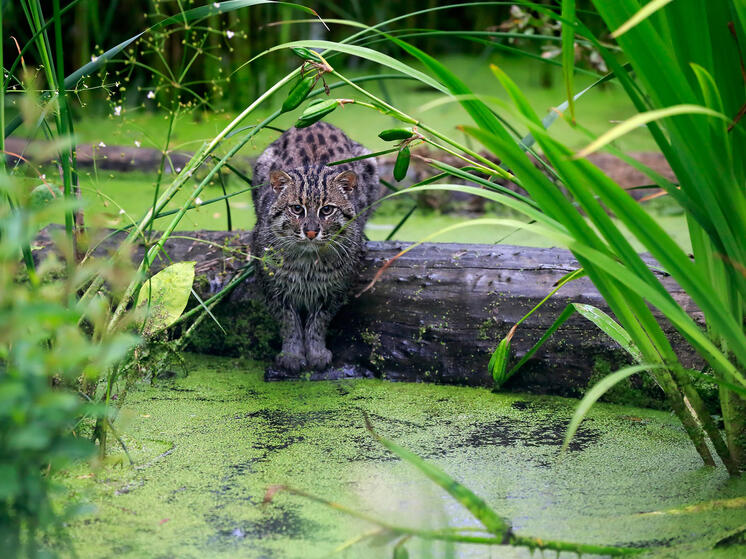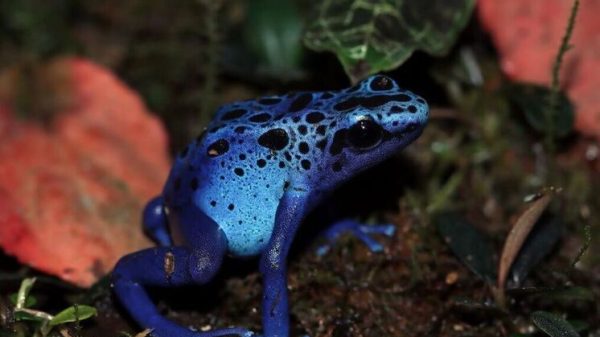Biologists are simply amazed by the unprecedented diversity of fauna
“We found 700 different species,” scientists say: an amazing diversity of wildlife has been discovered in the mangroves of Cambodia. Hairy-nosed otters and fishing cats are among the amazing diversity of creatures living in endangered habitats.

One of the most comprehensive studies of biodiversity ever conducted in mangrove forests has found that these key, endangered habitats are home to an amazing diversity of wildlife, writes The Observer.
< p>Hundreds of species – from bats to birds, from fish to insects – were identified during a study of the Peam Krasop Nature Reserve and the adjacent Koh Kapik Ramsar Nature Reserve in Cambodia. The study, which was funded by Fauna and Flora International, recorded hairy-nosed otters, smooth-coated otters, large-spotted civets, long-tailed macaques and fishing cats, as well as a wide range of bat species. The diversity of wildlife amazed biologists.
«We found 700 different species in these mangrove forests, but we suspect we haven't even scratched the surface,» said Stephanie Roge, leader of the research team whose report was published Sunday. “I am sure that if we could study this area even deeper, we would find 10 times more.”.
Mangrove forests form narrow strips of scrubland along coastlines in tropical and subtropical latitudes. They are important because they consist of trees that have adapted to grow in salt or brackish water, which most other plants cannot tolerate. However, over the past few decades, the planet has lost about 40% of its mangrove forests, which were often cut down to make way for beach resorts or agriculture.
However, mangroves play a critical role in protecting the land and its inhabitants. For example, their waters are home to fish of commercial importance. “We found juvenile barracudas, groupers and groupers in these waters,” Rog said. “They are obviously important breeding grounds for fish and provide local communities with food as well as supplies for commercial fishing.”
Mangroves also protect inland areas from tsunamis and storms and sequester carbon much more efficiently than other species forests and provide refuge for a huge number of animals, according to a new study that made extensive use of camera traps, nets, fish and insect data, and conducted “cross-sectional” research. along a straight line drawn through the landscape.
A key example of a strange species found in Cambodian mangrove forests is the fishing cat, Prionailurus viverrinus. Slightly larger than domestic cats, she is powerfully built, with short limbs and a stocky body, and – unlike most other cats – enjoys swimming. Its front toes are partially webbed and its claws project forward to help it catch prey, mainly fish and rats, which it stalks by hiding in the roots of mangrove trees.
“It’s very rare to see a fishing cat, and we only knew that it lived in the forest from photographs taken by our camera traps,” says Rog. – Mangroves are places where there are a lot of roots and dirt, and are difficult for humans to penetrate, so they provide valuable refuge for these vulnerable animals.
An even rarer animal, the hairy-nosed otter, has also been photographed by camera traps in some old parts of the mangrove forest. The Sumatran lutra uses the hairs around its nose to detect its prey, which consists of crustaceans, molluscs and other creatures.
It is the rarest otter in Asia and is critically endangered, which is a major concern, Rog said. “The mangrove forest is based on all the interconnected relationships between species, and if you start eliminating some of these species, then gradually you will disrupt the functioning of the forest”.
The study, which was also supported by Fishing Cat, a conservation organization, found 74 forest-dwelling fish species and 150 bird species, of which 15 are listed as endangered by the International Union for Conservation of Nature (IUCN). Red List Critically Endangered
Scientists say mangroves play a key role in preserving ecosystems as they serve as a two-way barrier between land and sea. They slow soil erosion into the ocean and protect coastal communities from floods and storms.
“But there's more to it, adds Rog. — Mangrove forests are beautiful, rich, mysterious and bring so much life. They are much more than just an ecosystem that provides carbon reduction or coastal protection. They are truly beautiful in their own right. For me there is no better feeling than being in this unique, mythical forest, knowing that there is still so much to discover, that there is another world waiting to be further discovered.”






















































Свежие комментарии